初心者セッション
〜データハンドリング編〜
y__mattu
2019/4/13 Tokyo.R #77
はじめに
誰?
- 松村優哉
- Twitter: y__mattu
- GitHub: ymattu
- 大学院生
- ベイズ統計、因果推論、マーケティング
- 言語: R, Python, (SAS)
- https://ymattu.github.io/
- http://y-mattu.hatenablog.com/
- Tokyo.R 運営
![]()
著書
R ユーザのための RStudio[実践]入門
− tidyverse によるモダンな分析フローの世界−

通称: 「宇宙本」
- RStudio 入門(@y__mattu)
- スクレイピングによるデータ取得(@y__mattu)
- dplyr を中心としたデータハンドリング(@yutannihilation)
- ggplot2 による可視化(@kyn02666)
- R Markdown によるレポーティング(@kazutan)
データハンドリング
データ分析の流れ
やること
- 絞り込み(列・行)
- 新しい変数の作成
- 集計
- テーブルのマージ
- 縦横変換
- etc…
今日のおはなし
- tidyverse
- dplyr
- FAQ
本題のまえに
Rとパッケージ
ざっくり
- Rはパッケージで機能を拡張することができる
- パッケージには機能特価の関数が詰まっている
install.packages()でインストール
パッケージ内の関数の表記
readr パッケージの read_csv 関数を使いたいとき
# 方法 1
library(readr)
dat <- read_csv("hoge.csv")
# 方法 2
dat <- readr::read_csv("hoge.csv")tidyverse について
tidyverse(概念)
ざっくり:
- R でやるいろんな操作(データハンドリング、可視化、スクレイピング、分析、etc)を直感的で統一的なインターフェースでできるようになったら嬉しくない?
tidyverse パッケージ
- 上記の概念を実現するためのコアパッケージ群
install.packages("tidyverse")でインストール
tidyverse を読み込み
library(tidyverse)── Attaching packages ────────────────────────────────────────────── tidyverse 1.2.1 ──✔ ggplot2 3.1.0 ✔ purrr 0.3.0
✔ tibble 2.0.1 ✔ dplyr 0.8.0.1
✔ tidyr 0.8.3 ✔ stringr 1.4.0
✔ readr 1.3.1 ✔ forcats 0.3.0 ── Conflicts ───────────────────────────────────────────────── tidyverse_conflicts() ──
✖ dplyr::filter() masks stats::filter()
✖ dplyr::lag() masks stats::lag()読み込まれるパッケージ
- ggplot2: 可視化
- dplyr: データの操作
- tidyr: データを tidy に
- readr: データの読み書き
- purrr: 関数型プログラミング
- stringr: 文字列の操作
- forcats: 因子型データの操作
- tibble: tibble というモダンなデータフレーム
本日の主役は
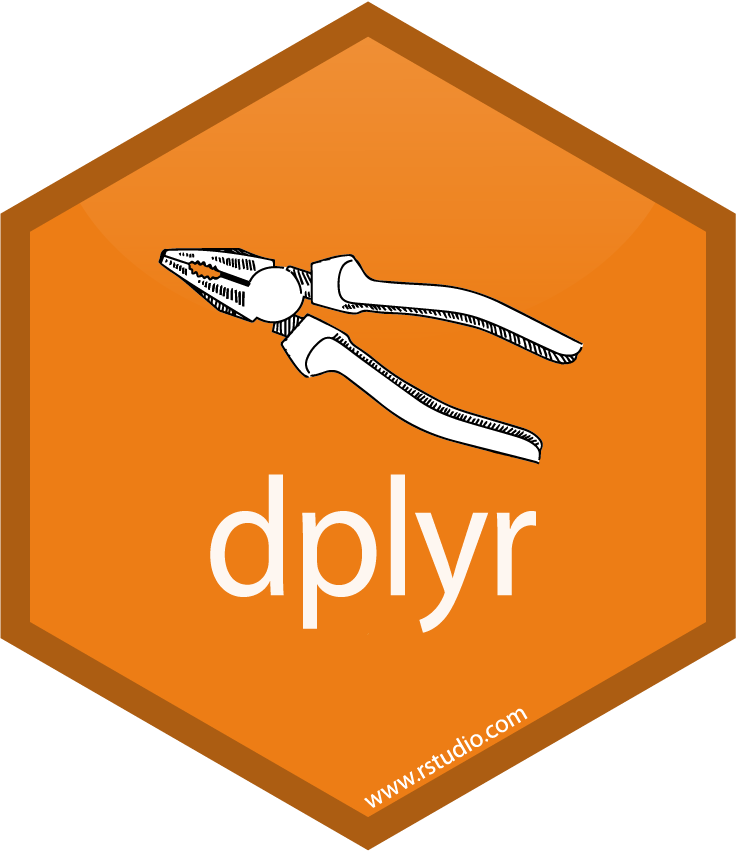
特徴
パッケージを使わないやり方より
- (大きいデータだと特に)
速い - 簡単
≒ わかりやすい - 他のtidyverseのパッケージと相性がいい
dplyrの思想
The dplyr package makes these steps fast and easy: - … - It provides simple “verbs”, functions that correspond to the most common data manipulation tasks, to help you translate your thoughts into code. - …
https://cran.r-project.org/web/packages/dplyr/vignettes/dplyr.html
ざっくりと日本語訳
- dplyr は、あなたの考えをコードに翻訳するための「動詞」を提供する。
- 「動詞」はデータ操作に関わる関数群
この発表のゴール
- Rの dplyr パッケージで簡単な集計ができるようになること
- dplyrや他のパッケージで何ができるのかをなんとなく把握して、「ググり力」を身につける
- パッケージ名だけでも覚えて帰ってください m(__)m
本日のデータ
EC サイトのログデータ
- を意識して作ったダミーデータ
- https://github.com/ymattu/sampledata_small
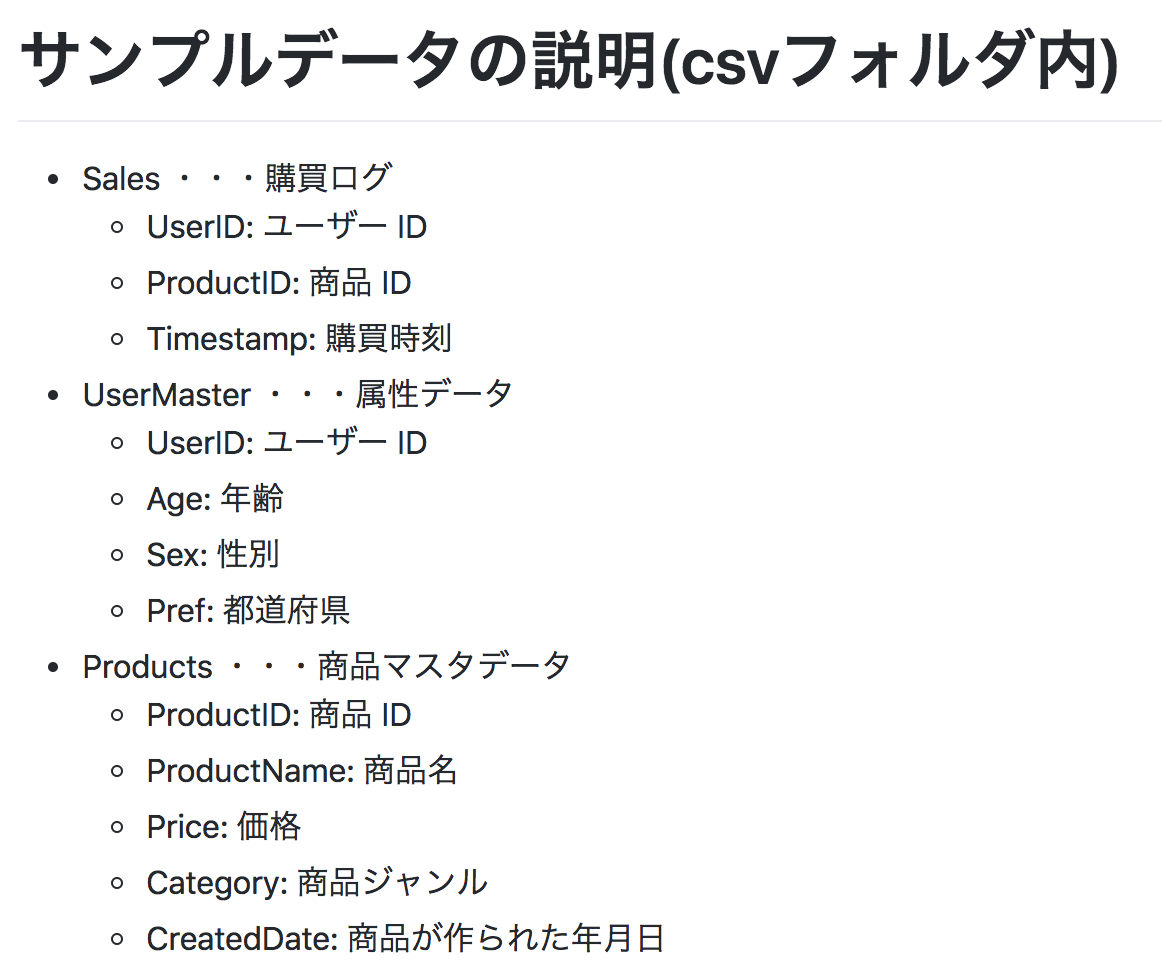
データの読み込み方
- RStudio のプロジェクトを作成
- Terminal ペインで以下を実行
git clone https://github.com/ymattu/sampledata_small - readr パッケージの関数で読み込み
sales <- read_csv("sampledata_small/csv/Sales.csv")
product <- read_csv("sampledata_small/csv/Products.csv")
user_master <- read_csv("sampledata_small/csv/UserMaster.csv")データ読み込みについて詳しくはこちらも参照
dplyr
列選択
sales %>%
select(UserID) %>%
head()%>%
パイプ演算子
- “これまでの処理を次の関数の第1引数として渡す」という働き”
- 例
1:3 %>%
sum()[1] 6# これと全く同じ
sum(1:3)なんでパイプ演算子が必要なのか?
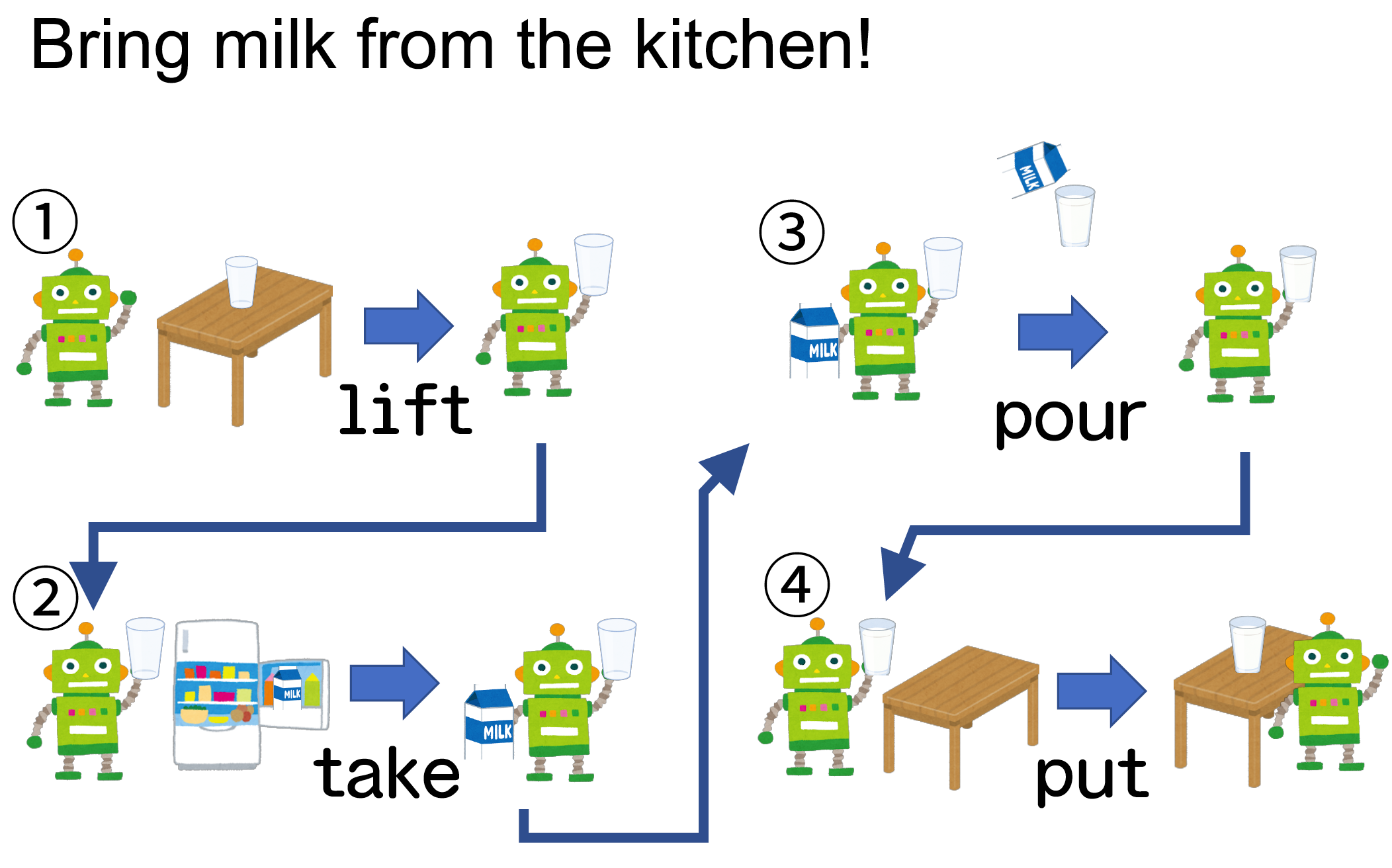
どう書くのか問題
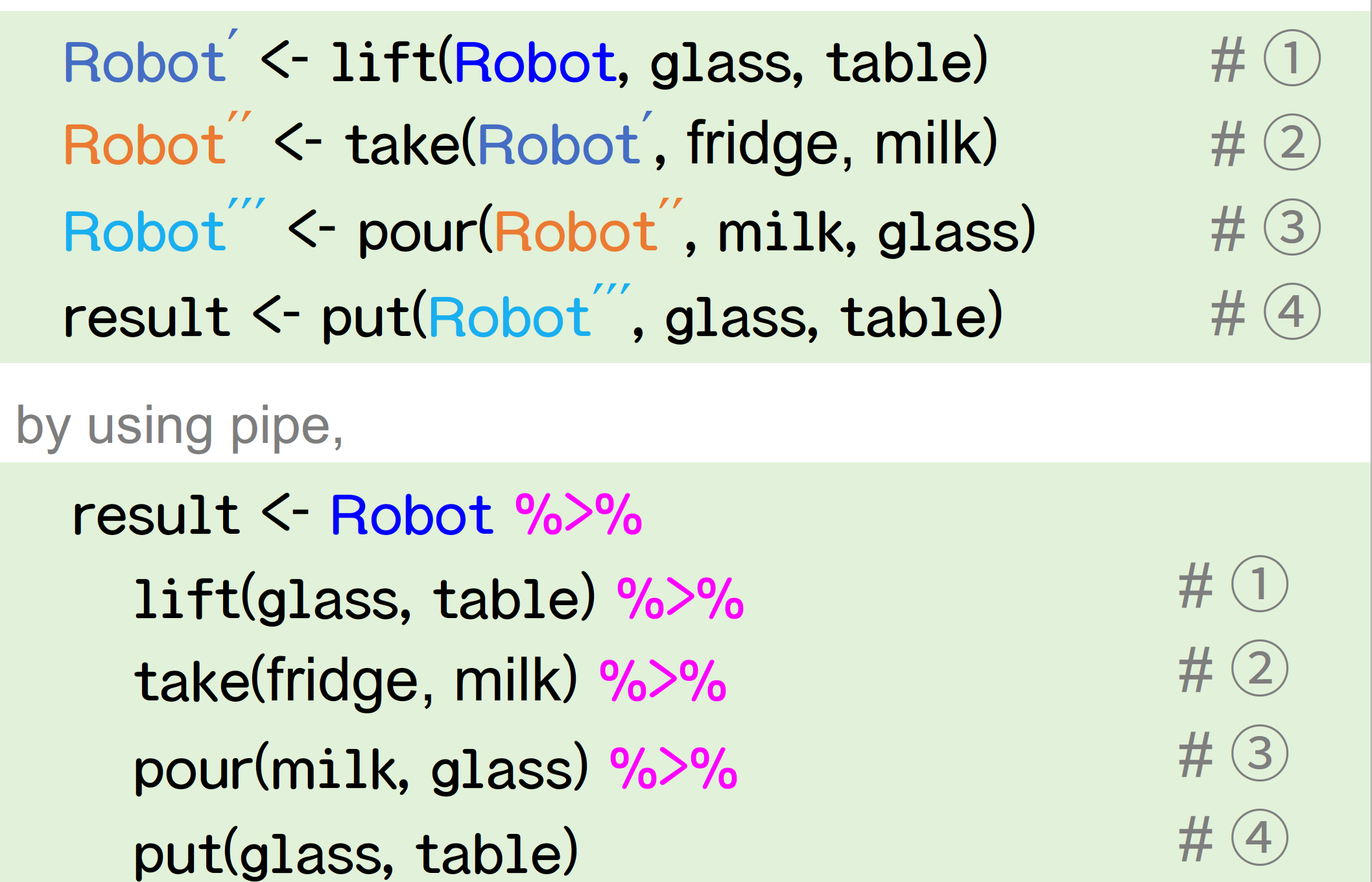
思考の流れと書く流れ
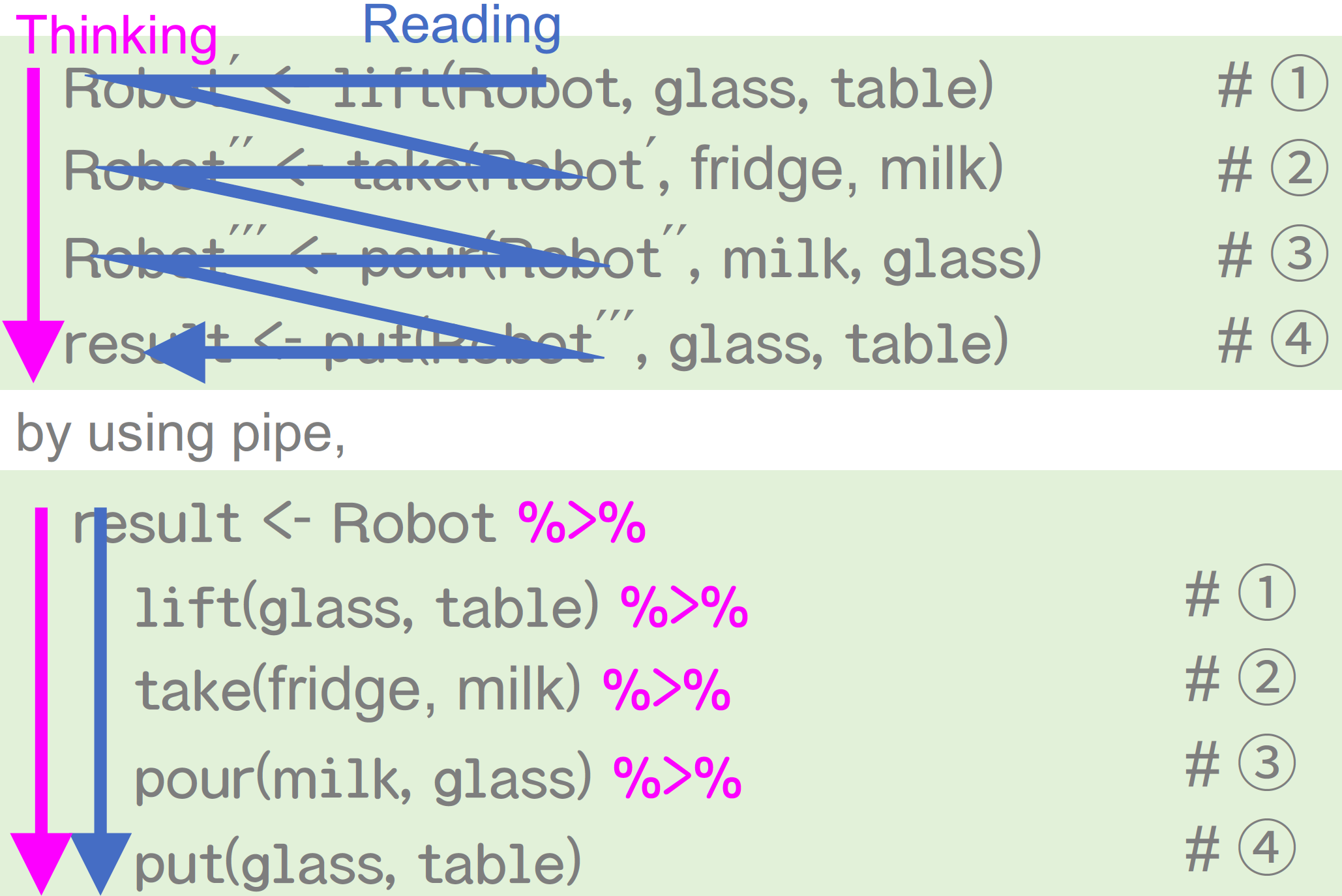
パイプ演算子を使うときのポイント
結果 <- スタート地点 を書いて、やりたい処理をパイプでつないでいく
列選択のやりかたいろいろ
product %>%
select(starts_with("P")) %>%
head(4)列選択のやりかたいろいろ 2
例
select(product, 1:3) # 列番号が連続している場合
select(product, ProductID:Price) # 列名でも連続していれば同様
select(product, -CreatedDate) # 特定の列を除く
select(product, -4) # 特定の列番号を除く
select(product, starts_with("p"), ignore.case = TRUE) # 大文字小文字を無視
select(product, matches("^(Product|Price)")) # "Product"または"Price"で始まる列を選択列追加
- 税込み価格を計算
product %>%
mutate(zeikomi = Price * 1.08) %>%
head(4)行の絞り込み
user_master %>%
filter(Age >= 20, Sex == "F") # 年齢 20 歳以上の女性集計
- グルーピング + 集計
sales %>%
group_by(UserID) %>%
summarise(buy_count = n())ここまでやったところで
パッケージを使わないでできないの?
- できるものもあります。
- select, filter あたりはできます。
- でもめんどくさい
- しかもデータが大きいと遅い
- このあたり、私の過去資料もみてね
- でも
$はお手軽だしよく使います。
$で 1 列だけ取り出す
product$Category %>%
unique()[1] "雑貨・日用品" "花・グリーン"
[3] "食品" "衣料品"
[5] "ヘルス&ビューティー" "家具・インテリア・家電"日付の操作
lubridate パッケージ

データハンドリングでの使い所
たくさんあるけど例えば
sales %>%
mutate(buy_year = year(Timestamp)) %>%
head()ここから集計につなげる
ユーザー、年ごとに集計
sales %>%
mutate(buy_year = year(Timestamp)) %>%
group_by(UserID, buy_year) %>%
summarise(buy_count = n()) %>%
arrange(UserID) %>%
head()その他、代表的な
(面倒くさい)型たち
文字列型
- stringr パッケージ
- https://kazutan.github.io/kazutanR/stringr-intro.html
因子型(factor型)
- forcats パッケージ
- https://kazutan.github.io/kazutanR/forcats_test.html
テーブルのマージ
複数のテーブルを考える
a
b
- 基本は SQL と同じ
inner_join()
a
b
inner_join(a, b, by = "x1")left_join()
a
b
left_join(a, b, by = "x1")full_join()
a
b
full_join(a, b, by = "x1")anti_join()
a
b
anti_join(a, b, by = "x1")FAQ
dplyr とかだと何で
R の標準関数より速いの?
Answer : C++を使っているから
- dplyrや readrでは、メインの処理を C++でやり、結果を R で受け取る、という構造になっています。
- Rcpp パッケージが活躍!
たくさんのテーブルを join したい!
例えばこんな感じ(a, b, c 3 つのデータ)
x1 x2
1 A 1
2 B 2
3 C 3 x1 x3
1 A TRUE
2 B FALSE
3 D TRUE x1 x4
1 B 10
2 C 11
3 D 12こうする…?
a %>%
full_join(b, by = "x1") %>%
full_join(c, by = "x1")たくさんのテーブルを join したい!
Answer : 初心者セッションの範囲をこえますが、
purrrパッケージを使うと簡単です。
datlist <- list(a, b, c)
datlist %>%
purrr::reduce(~full_join(.x, .y, by = "x1"))まとめ
言いたいこと
- (イマドキな)R でのデータハンドリングでは
tidyverseは必須 - 基礎的なことはTokyo.R初心者セッションや、宇宙本で!
- 応用は、まずパッケージ名を知ることから(purrr, broom, etc…)
- ぜひ使いこなせるようになりましょう。
本資料について
- revealjs パッケージで作りました。
- 以下の URL で公開しています。
https://ymattu.github.io/TokyoR74/slide.html#/